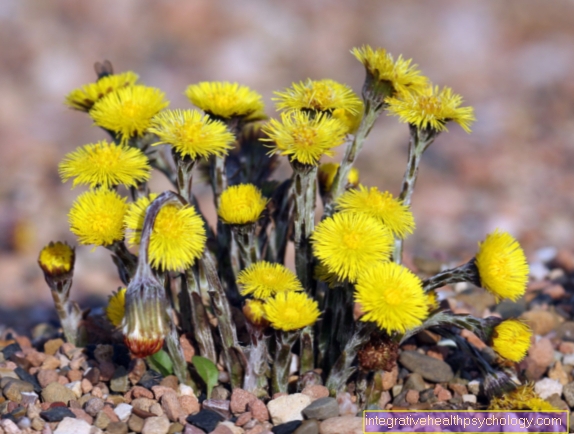Coltsfoot
Latin name: Tussilago farfara
genus: Asteraceae
Common names: Lettuce, clay flower, male flower
Plant description
The plant blooms bright yellow in early spring. Only after flowering do the leaves develop, which are covered with a white fur felt on the underside.
Heyday: February to March.
Occurrence: Coltsfoot thrives especially on loamy soils in temperate climates, on fields and along the wayside.
Plant parts used medicinally
The leaves, more rarely the flower heads.
ingredients
Plant mucilages, tannins and bitter substances, alkaloids.
Medicinal effect and application
To Irritation relief for colds of the respiratory tract, supporting Pulmonary flatulence and pneumonia, chronic bronchitis. Coughing up the tough mucus is made easier. Also as Gargle for inflammation in the throat Coltsfoot tea is suitable.
preparation
Coltsfoot tea:
Pour ¼ l of boiling water over 2 heaped teaspoons of cut, dried coltsfoot leaves, let stand for 5 minutes, strain. Drink a cup sweetened with honey 3 times a day. In the case of chronic bronchitis, it is advisable to drink a cup of tea in the morning after waking up to make it easier to cough up the mucus that has formed overnight.
For gargling with inflammation of the throat, this tea is used without sugar or honey.
Side effects
In the event of continuous use and overdosing, a liver damaging effect cannot be excluded. A carcinogenic effect with long-term use is also being discussed.


















.jpg)










